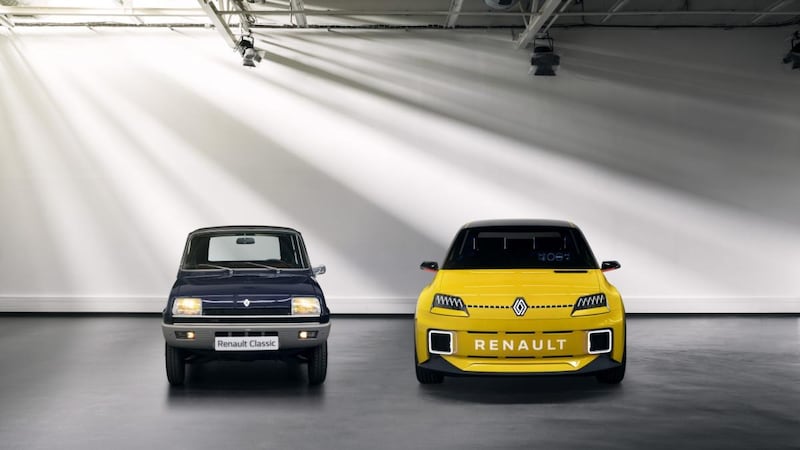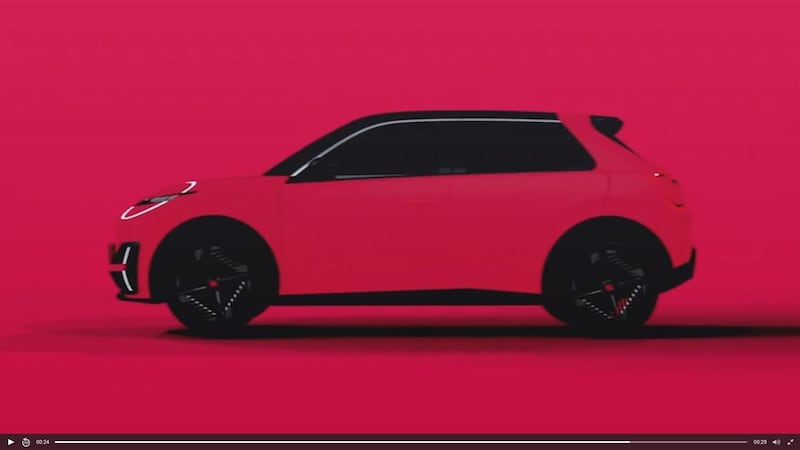There is a terrible dichotomy currently facing both the car buyer and the car maker. Small cars are, without question, the best possible solution for personal transport, but they are increasingly hard to make any money from. Many such small cars are slowly disappearing from price lists.
A swift glance at price lists reveals that cars – the likes of the Skoda Fabia, Ford Fiesta, VW Polo and Toyota Yaris – which not so long ago cost €14,000-€15,000 to buy in their cheapest forms, are now topping €17,000 or even €18,000 as a base price. To get one with decent equipment, you're looking at €20,000 and then some.
To buy an electric equivalent of such models, for instance, a Renault Zoe or Peugeot e-208 and you're looking at more like €27,000. This is a conundrum currently facing car makers. Small cars make the least possible impact on the environment for a given level of usefulness, yet they're the cars that are the hardest to make any money on.
People expect the same standards of build quality and comfort as they’d find in a larger car but aren’t prepared to pay any extra for them. Equally, legislators demand the same levels of safety and high-tech safety assistance systems, but the cars have far less pricing headroom to absorb the costs of such things.
Bully for the car makers, you might say. It’s up to them to produce a car that’s good enough at a price people can afford, and you wouldn’t be wrong. The downside to that argument is, increasingly, that car makers are simply following the money and the fashion, and getting out of small cars altogether. More and more SUVs seems to be the answer to the conundrum. Even Tesla, which had reportedly been considering a model smaller than its Model 3, with a notional (if entirely fictional) price tag of about €25,000-€30,000, has recently shelved such plans.

And Audi boss Markus Duesmann has suggested that its small A1 hatchback would not continue in production once the current model has run its course. Speaking to journalists at a press event, Duesmann said: "We will certainly offer Q2s and the like. That might be the new entry level for us; we might not do anything smaller."
That’s fine from a car maker standpoint – people want SUVs and manufacturers can charge more for them, untangling the profit margin difficulty – but such cars are far more harmful to the environment than their smaller, lower compadres. British consumer advocates Which? reckons that SUVs are far worse than estates when it comes to both fuel economy and emissions.
“Our independent tests reveal that, on average, SUVs emit much more CO2 than conventional models. Our lab-measured tailpipe emissions tests, tank-to-wheel CO2, which are more stringent than the official emissions tests, show just how big the difference is,” said Which?
According to its measurements, it found that a medium-sized diesel SUV emits 171g/km on average, compared to 136g/km for a “medium car” or 155g/km for a “large car”. Both of those latter categories include luxury and high-performance models.
It’s the same story in terms of fuel economy, where Which? found that a medium-sized SUV could cost you more than €300 a year extra in fuel expenses, while even small “crossover” SUVs were about 7 seven per cent less fuel-efficient than mechanically-similar small hatchbacks.
Even electric power isn’t a get-out clause: a bigger, heavier, less aerodynamic car will need bigger, heavier, less efficient batteries, and require more frequent charging. If it’s a heavy car, it may well also fall foul of new taxes on cars that sit in heavier weight categories, such as France’s tax that makes owners pay an extra €10 a year for every kilo over 1,800kg that their car weighs. Batteries are also, you may have noticed, not cheap, and could potentially become more expensive in the next few years as prices for lithium and other components soar.
Thankfully, it seems as if at least some car makers are prepared to commit to a future of lighter, simpler, less destructive cars. Renault has already had a great deal of success with its compact Zoe electric car (net of concerns over its safety rating), and this year will introduce a more fashionable replacement, a revival of the classic 1980s Renault 5.
That car will use the newly developed CMF B-EV electric car platform, jointly developed by Renault and its partners at Nissan. It will retain the current circa-400km full-charge range of the Zoe, but it will be as much as 33 per cent more cost-efficient to build, and about 10 per cent more efficient in terms of power consumption.
It won’t be alone. Quite apart from the fact that Renault’s sporting division, Alpine, will make a sporty hot-hatch version of the same car, Nissan has also committed to an all-new Micra, based on the same electric chassis.
The occluded images Nissan has revealed so far seem to indicate a return to the curvey, big-eyed style of the K11 and K12 Micras from the 1990s and early 2000s. “This all-new model will be designed by Nissan and engineered and manufactured by Renault using our new common platform, maximising the use of our Alliance assets while maintaining its Nissan-ness,” said Nissan’s chief operating officer Ashwani Gupta.
The new Micra will be made alongside the electric Renault 5 – and a likely electric revival of the Renault 4 – in the so-called "ElectriCity", a conglomeration of Renault's big plants in northern France at Douai, Maubeuge and Ruitz.

The new Micra (if it will be called Micra; Nissan hasn't confirmed that yet) will not be alone in the cutesy-faced small electric car world. Chinese car-making giant Great Wall (which once used to sell pickup trucks in Ireland) has launched a new electric car brand, called Ora.
The compact Ora Cat 01 has been confirmed for European sales, and will be made in right-hand drive, although there’s no decision yet on any Irish sales. It’s actually about the same size as the roomy Volkswagen ID.3, but will be priced far more aggressively, potentially down to the same sort of €27,000 level as the Renault 5 and Micra. It’ll come with a battery pack of up to 63kWh capacity, giving a range of more than 400km. Oh, and it comes with styling that seems to heavily reference the round-headlight look of the Micra, and the original VW Beetle.











